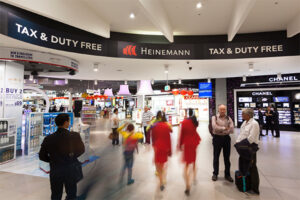By James Brown
Despite a slowdown in China, the US election circus, Brexit uncertainty, and muted economic growth in Europe, all coupled with the underlying persistent retail sector challenges (and opportunities) posed by the continued growth of eCommerce, international retailers are still pursuing global expansion plans. Retailer growth strategies are ruthlessly focused, however, on city selection favoring those cities that offer resilience in addition to growth prospects.
Having undertaken an in-depth analysis of the expansion and presence of 240 leading international retailers across 140 of the world’s leading retail cities, it is clear where the opportunities lie for both stability and growth. These top 140 gateway cities house 13% of the world’s population but attract 33% of global consumer spending. London is in pole position, followed closely by Hong Kong, Paris, Dubai, and New York. It is clear that global cities, to a greater degree, remain resilient to shock over the medium term and that their longer-term track record continues to attract inward investment, whatever shorter-term black swans emerge.
This is particularly true of “global” or “mature” cities, which have the wider resilience attributes of broad-based economic drivers, a growing resident population, workers, and heritage and culture, which fuel tourism. These established, top-tier cities remain firmly in international retailers’ sights, but growth cities still present significant opportunities for those who get it right. Recent aggressive expansion into China for some retailers, and the subsequent rapid consolidation in response to the economic slowdown and the impact of a fast-growing online market shows the volatility of some emerging markets and the specific challenges with emerging market entry. For “emerging” and “growth” cities globally, latent demand still exists for adventurous retailers with established and translatable retail propositions, but entry strategies need to be watertight to avoid costly mistakes.
Online certainly has its part to play in building brand awareness in new geographies and we can expect to see it play an important role in global brand store rollout: There is no reason for a retailer to enter a market without having tested the brand online. We can expect to see online continue to influence retailer store requirements globally, complementing the physical store network to access a global consumer base.
The globalization of the retail market has resulted in a significant shift in the landscape in recent years; major global cities remain the epitome of resilience while Asia-Pacific and the Middle East have seen the biggest influx of new international brands over recent years. From the Americas, through EMEA, to Asia-Pacific, however, the international retail market is rapidly polarizing in favor of select global cities. Geographic appetite will broaden with an improved economic and political landscape, but for now, we see continued, albeit selective, expansion focused on select geographies.
Navigating the global retail roadmap is complex and we appreciate the challenges of successful international retail expansion, especially against global and sector headwinds, but we also see the rewards for those who get it right.
To register for your copy of ‘Destination Retail’ please visit www.jll.com/destination-retail
What is your opinion on this topic? Discuss it with us! Send your opinion to opinion@across-magazine.com !






